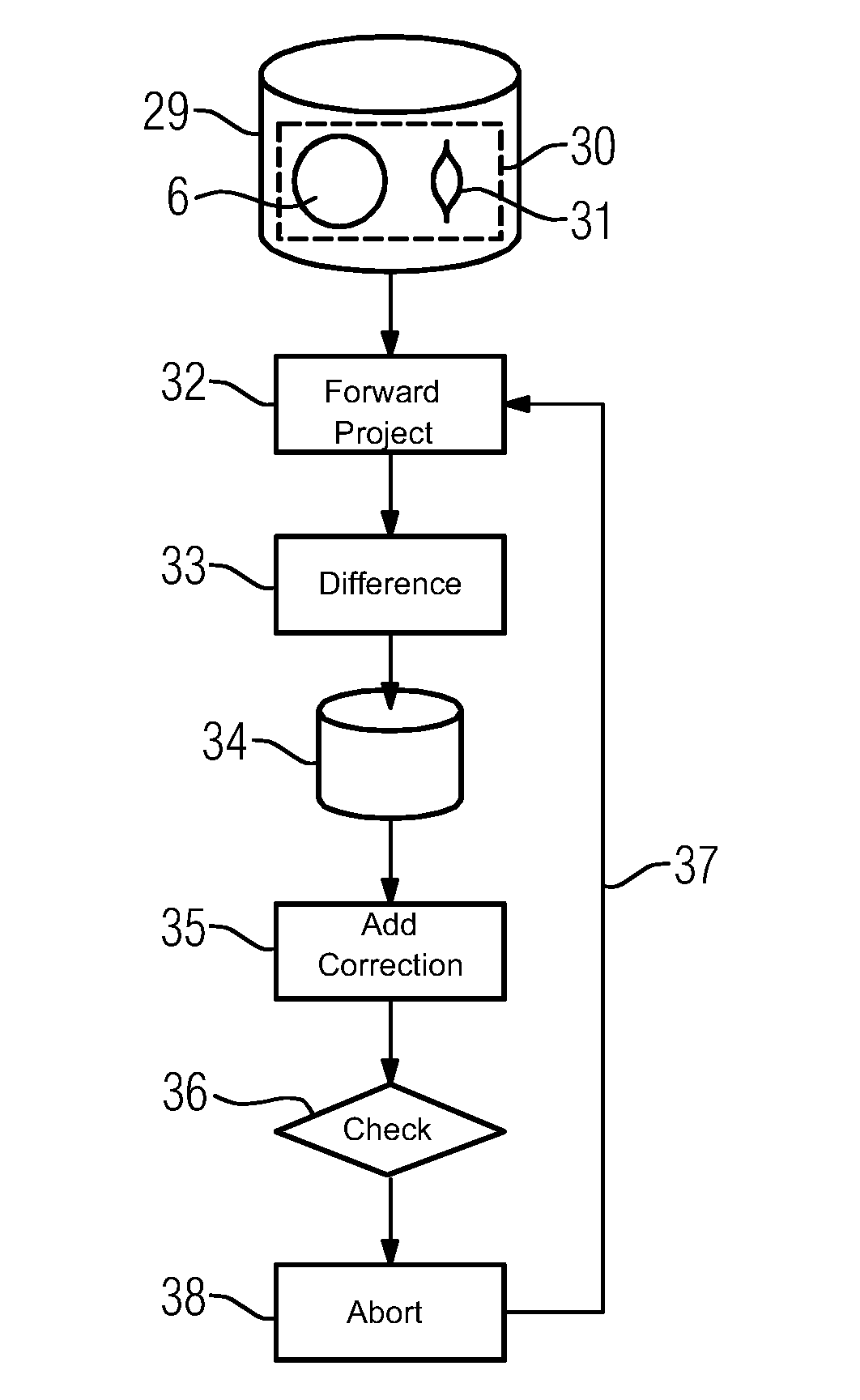Reducing Artifacts in an Image Data Set and X-Ray Device
a technology of image data and x-ray, applied in image data processing, diagnostics, applications, etc., can solve the problems of object giving rise to artifacts, concept cannot be used, and it is not possible to produce a complete and correct depiction of objects, so as to improve the depiction of objects
- Summary
- Abstract
- Description
- Claims
- Application Information
AI Technical Summary
Benefits of technology
Problems solved by technology
Method used
Image
Examples
first embodiment
[0048]The procedure according to FIG. 3 may be further improved in the first embodiment in that the reconstruction data set 23 undergoes segmentation, preferably four-material segmentation according to the material classes air, bone, soft tissue and contrast medium. From the segmentation, a virtual, normalization image based on the effective transmission lengths of the material classes is determined. This normalization image may be used to normalize the measured projection images 14, 18 and the comparative images so that smoothing of the other deviating portions occurs and the method becomes more robust.
second embodiment
[0049]In the second embodiment, which is explained in more detail by FIG. 4, the localization of the areas 19 takes place within the context of an iterative, constantly improving reconstruction of the object 7 as well. To this end, an iterative procedure is used wherein a reconstruction data set is generated from the measured projection images 14, 18, although it relates to an enlarged object volume 30, which is indicated schematically in FIG. 4. The object volume 30 includes the reconstruction volume 6 and also an area that contains the object 7. As the area of the object 7 is not covered sufficiently in order to obtain a complete reconstruction since the object 7 may only be seen in some of the measured projection images 14, 18, the depiction 31 of the object 7 in the reconstruction data set 29 is imprecise, for example blurred, as indicated in FIG. 4.
[0050]It is now the object to improve the reconstruction data set 29 iteratively, for which, in an act 32, first comparative images...
PUM
 Login to View More
Login to View More Abstract
Description
Claims
Application Information
 Login to View More
Login to View More - R&D
- Intellectual Property
- Life Sciences
- Materials
- Tech Scout
- Unparalleled Data Quality
- Higher Quality Content
- 60% Fewer Hallucinations
Browse by: Latest US Patents, China's latest patents, Technical Efficacy Thesaurus, Application Domain, Technology Topic, Popular Technical Reports.
© 2025 PatSnap. All rights reserved.Legal|Privacy policy|Modern Slavery Act Transparency Statement|Sitemap|About US| Contact US: help@patsnap.com



